Paris’ grand boulevards, historic monuments, museums, and classic bistros are now complemented by a vibrant new scene of multimedia galleries, trendy wine bars, innovative design shops, and emerging tech start-ups.
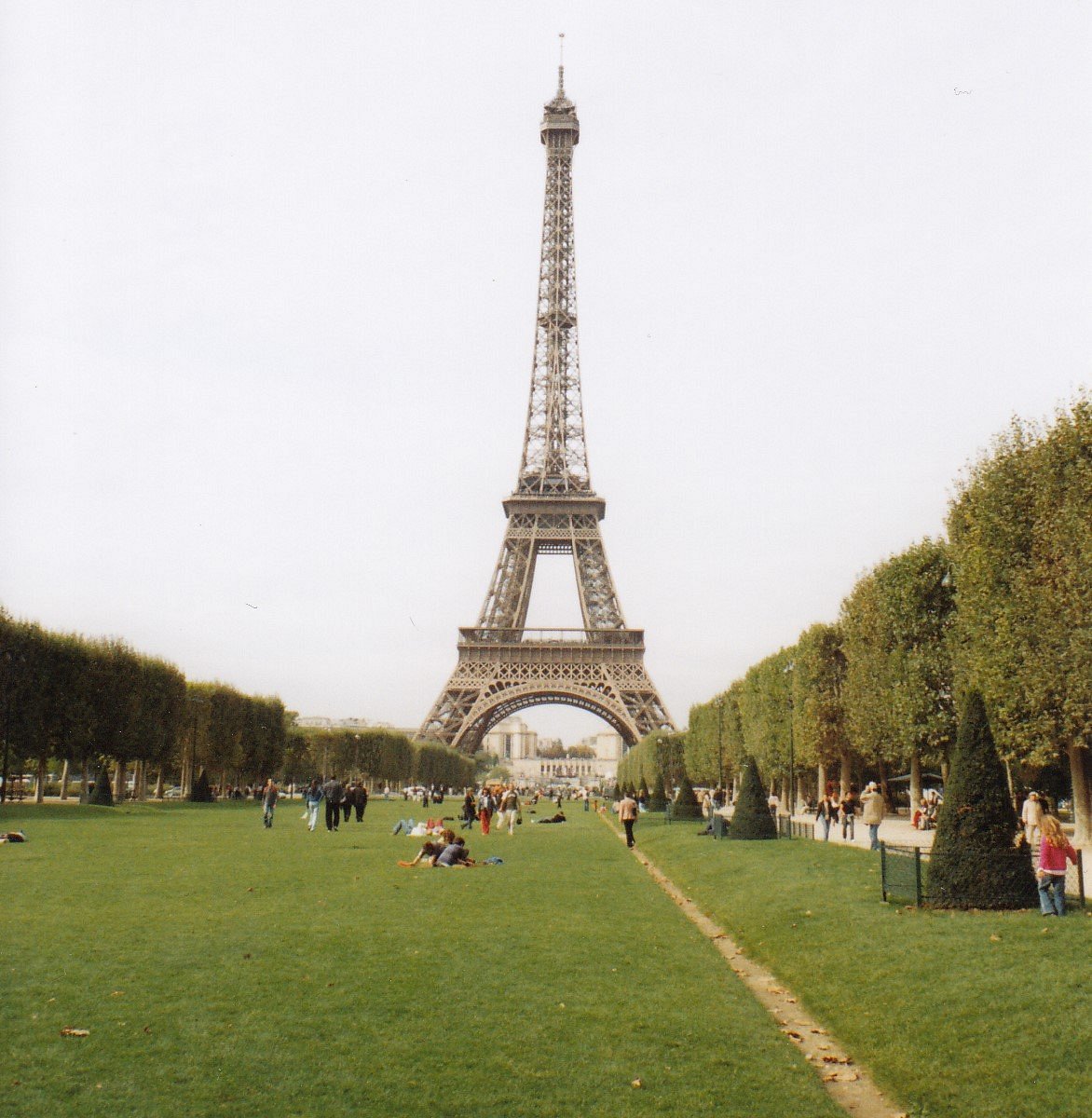
There are many ways to enjoy the Eiffel Tower—from a daytime visit to an evening climb under twinkling lights, or dining in one of its renowned restaurants. Although some seven million people visit each year, every experience feels unique, making it an essential stop when in Paris.
History
Named after its designer Gustave Eiffel, the Tour Eiffel was constructed for the 1889 Exposition Universelle (World’s Fair). It took 300 workers, 2.5 million rivets, and two years of continuous effort to assemble. Upon completion, it became the tallest man-made structure in the world at 324 meters—a record it held until New York’s Chrysler Building surpassed it in 1930. Though initially criticized by Paris’s artistic and literary elite and nicknamed the “metal asparagus,” the tower was slated for demolition in 1909. It was saved because it became a vital platform for radiotelegraphy antennas.
Over the years, the tower has sported six different colors. Since 1968, it has been painted red and bronze, but currently, restoration is underway to remove the 19 existing paint layers and reapply the yellow-brown shade Gustave Eiffel originally envisioned, giving it a golden glow just in time for the 2024 Olympics.
First Floor: Café and Souvenir Shop
Of the tower’s three floors, the 1st (at 57 meters) offers the most space but the least impressive views. The glass-enclosed Pavillon Ferrié features an immersive film experience, a small café, and a souvenir shop. Outside, the discovery circuit educates visitors on the tower’s ingenious design, including sections of glass flooring that give dizzying views of the tiny people below. This floor also hosts the restaurant 58 Tour Eiffel. The commercial areas here are powered by two sleek wind turbines integrated into the tower.
Second Floor: Le Jules Verne Restaurant
The 2nd floor (115 meters) offers the best views—high enough for sweeping panoramas yet close enough to see the city’s details. Telescopes and panoramic maps help pinpoint landmarks in Paris and beyond. Story windows explain the lift mechanisms, and the vision well lets you look straight down through glass panels. This floor also has toilets, a souvenir shop, a macaron bar, and the Michelin-starred restaurant Le Jules Verne.
Top Floor: Champagne Bar and ‘Secret Apartment’
At the top floor (276 meters), views stretch up to 60 km on clear days, offering broad, sweeping panoramas. Celebrate with a glass of champagne (€13–€22) at the Champagne bar, open daily from 10:15 am to 10:15 pm. Nearby, Gustave Eiffel’s restored top-level office—the so-called “secret apartment”—displays lifelike wax figures of Eiffel, his daughter Claire, and Thomas Edison.
Tours, Tickets, and Practical Information
Visitors enter through bulletproof glass barriers at the tower’s base, with two entrances on avenue Gustave Eiffel and exits on quai Branly. You can ascend to the 2nd floor by foot or lift; from there, a separate lift (closed in heavy winds) takes you to the top floor. Pushchairs must be folded in lifts, and bags larger than airplane cabin size are prohibited. Note that the top floor and stairs are not accessible to people with limited mobility.
Buying tickets online ahead of time grants a time slot and allows you to bypass ticket queues, though you still must pass security. Print your ticket or show it on your phone. Stair tickets cannot be reserved online and must be purchased at the south pillar entrance, where you can climb 360 steps to the 1st floor and another 360 to the 2nd floor.
Restaurant reservations include direct post-security access to the lifts.
For the best vantage point of the Eiffel Tower’s light show, head across the Seine to the Jardins du Trocadéro.
Getting There
The nearest Metro station is Bir Hakeim, and the closest train station is Champ de Mars–Tour Eiffel on RER line C.

Home to Europe’s largest collection of modern and contemporary art, Centre Pompidou has captivated visitors since its opening in 1977—not only for its exceptional art collection but also for its bold, radical architecture. Don’t miss the spectacular panoramic views of Paris from the rooftop.
What You Can See
The Musée National d’Art Moderne, France’s national collection of art from 1905 onward, is the main attraction. Although only a fraction of its 100,000-plus works is displayed, you’ll find Fauvist, Cubist, Surrealist, Pop Art, and contemporary pieces, mainly on the 4th and 5th floors.
The permanent collection rotates every two years, but the layout remains consistent. The 5th floor features artists active between roughly 1905 and 1970, including Picasso, Matisse, Chagall, Kandinsky, Arbus, Warhol, Pollock, and Rothko.
The 4th floor focuses on contemporary works from about the 1990s onward, with large paintings, installations, sculptures, and video art. This floor highlights contemporary art, architecture, and design.
The massive Bibliothèque Publique d’Information (public library) occupies part of the 1st floor and the entire 2nd and 3rd floors, accessible from rue du Renard. The 6th floor houses two galleries for temporary exhibitions (usually excellent) and the Georges restaurant, offering sweeping Paris views.
The ground floor and basement feature cinemas and more exhibition spaces. Nearby, place Georges Pompidou and surrounding pedestrian streets buzz with street performers, while place Igor Stravinsky to the south showcases whimsical mechanical fountains by Jean Tinguely and Niki de Saint Phalle.
Centre Pompidou for Children
On the 1st floor, the Galerie des Enfants (open 11 am to 7 pm Wednesday to Monday) offers interactive exhibitions for children aged 2 to 10, with workshops on Wednesday, Saturday, and Sunday.
For teens aged 13 to 16, Studio 13/16 (open 2 pm to 6 pm Wednesday, Saturday, and Sunday on the lower ground floor) provides visual, multimedia, and performing arts activities, plus chances to meet artists.
The Building
Commissioned by former French President Georges Pompidou, the building was designed by architects Renzo Piano and Richard Rogers with an inside-out concept: pipes, vents, and electrical cables form part of the external façade, freeing interior space for exhibitions and events. The building underwent renovation in 2020.
Tickets and Practical Information
Centre Pompidou is open late most nights (closed Tuesdays). Visit around 5 pm to avoid crowds. Admission is free on the first Sunday of each month. Rooftop access is included with museum admission, or you can buy a separate panorama ticket (€5) for roof access only. Security queues remain, but buying tickets online speeds entry.
Audio-guided tours are available for download on the museum’s website (bring your own smartphone and earphones). English guided tours take place Saturdays at 2 pm and sometimes Sundays (€4.50; book online).
The museum is wheelchair accessible via a step-free entry at the south side (corner of Rue du Renard and Rue St Merri), with elevators inside.
The nearest Metro station is Rambuteau.

Visit Sainte-Chapelle on a sunny day to see Paris’ oldest and finest stained glass (1242–48) at its most dazzling. Renowned for its stunning stained-glass windows, holy relics, and sacred concerts, this chapel is a true Gothic jewel.
Located within the city’s original 13th-century Palais de Justice (Law Courts), Sainte-Chapelle is Paris’s most exquisite Gothic monument, completed in 1248. Built by Louis IX to house his personal collection of holy relics—including the famous Holy Crown—the chapel preserves about 70% of its original stained glass, covering 640 square meters. To fully appreciate the 1,113 biblical scenes, view the windows from left to right and bottom to top, like reading a story.
History
Sainte-Chapelle was constructed in the courtyard of the royal palace on Île de la Cité as a sacred home for Louis IX’s Christian artifacts. The prized Holy Crown was acquired in 1239 from the emperors of Constantinople for a sum greater than the chapel’s construction cost. Originally kept at Notre Dame Cathedral, the crown was moved to the Louvre after the 2019 Notre Dame fire for safekeeping. Unlike Notre Dame, Sainte-Chapelle was built quickly—in just six years—and consecrated in 1248.
Insider Tips
Join a free 1½-hour guided English tour daily between 11 am and 3 pm, rent a 30-minute audioguide (€3), or download the Sainte-Chapelle smartphone app to explore the windows in rich detail.
Due to its location within the Palais de Justice, security is strict—leave sharp objects like pocket knives or scissors at your accommodation.
Classical and sacred music concerts here offer a deeply moving experience—check schedules and buy tickets at Fnac.
Tours, Tickets, and Accessibility
Free 45-minute guided tours (French only) depart daily at 11 am and 3 pm from the information desk near the ground-floor bookshop. Audioguides cost €3. Entry is free on the first Sunday from November to March.
Avoid long queues by purchasing a combination ticket at the nearby Conciergerie, giving you priority access to Sainte-Chapelle.
Wheelchair access is limited to two visitors per floor. Accessible entry is on Boulevard du Palais. The lower chapel can be reached via a ramp, while the upper chapel is accessible by elevator in the adjacent building. Adapted wheelchairs and wheelchair-friendly toilets are available. Advance reservation for assistance is recommended.
Nearby
Notre Dame Cathedral is about a 10-minute walk away. Nearby dining caters mostly to tourists and office workers, but Place Dauphine offers several charming eateries, including bistro Ma Salle à Manger and the modern French-Senegalese fusion restaurant Sequana.
Getting There
The nearest Metro station is Cité (Line 4), just steps away.
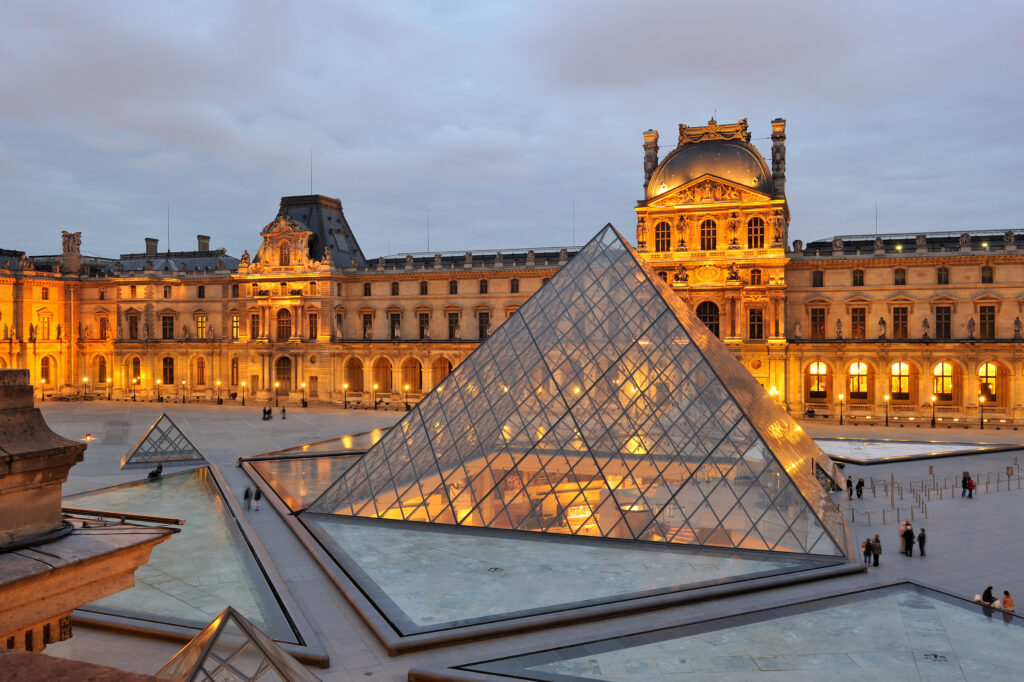
It’s only when you stand in the vast courtyard of the Louvre, framed by its iconic glass pyramid and ornate façade, that you truly feel you’ve arrived in Paris.
Why You Should Go
Home to tens of thousands of artworks—from Mesopotamian, Egyptian, and Greek antiquities to masterpieces by Leonardo da Vinci (including the incomparable Mona Lisa), Michelangelo, and Rembrandt—the Louvre is one of the world’s most visited museums.
The museum showcases Western art—mainly French, Italian, Dutch, and Spanish—from the Middle Ages to around 1848, when the Musée d’Orsay takes over, along with priceless collections of ancient civilizations foundational to Western culture.
History
Originally a 12th-century fortress built by Philippe-Auguste, the vast Palais du Louvre was rebuilt as a Renaissance royal residence in the mid-16th century. It became a national museum during the French Revolution in 1793.
At its opening in the late 18th century, the museum held 2,500 paintings and objets d’art. The ‘Grand Louvre’ project, launched by President François Mitterrand in 1989, doubled the exhibition space. Recent renovations have added galleries for objets d’art like Louis XV’s crown jewels, and the restored Cour Visconti houses the Islamic art collection.
Tickets and Practical Information
The sheer size of the Louvre can be overwhelming, but self-guided thematic trails (about 1½ hours each) are available for download, covering topics from Louvre masterpieces to the art of eating, plus fun trails for kids like lion hunts or spotting galloping horses.
Multimedia self-paced guides cost €5. Formal English-language guided tours start from the Hall Napoléon, where free English maps are also available.
The main entrance is through the 21-meter-high Grande Pyramide, a glass pyramid designed by architect I.M. Pei (1917–2019).
Standard tickets cost €15. To guarantee entry, book online (with a €2 surcharge) or use the Paris Museum Pass for a timed slot. To avoid long security lines at the pyramid entrance, consider entering via the underground Carrousel du Louvre shopping centre or the Porte des Lions entrance.
Without a pre-purchased ticket, you must queue again inside to buy one—this is not recommended during peak times when capacity limits apply. Tickets are valid only for the day of your visit, with no re-entry allowed.
Since the COVID-19 pandemic, the Louvre has implemented timed tickets and banned cash payments. It has occasionally closed due to lockdowns—always check the official website for current information.
Hotels Near the Louvre
Hotel Westminster
Apartments du Louvre
La Clef Louvre
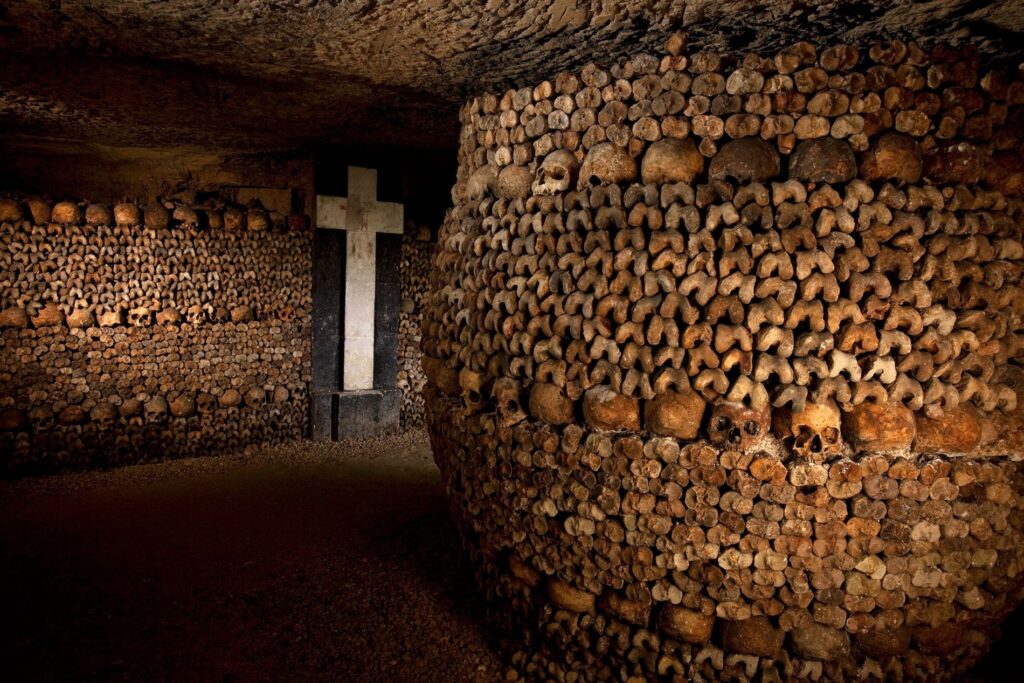
Gruesome, ghoulish, and undeniably spooky, the Catacombs of Paris never fail to captivate visitors. In 1785, underground tunnels of an abandoned quarry were repurposed to store the exhumed bones from overcrowded city cemeteries—today, it is one of Paris’s most visited and eerie attractions.
History
As Parisian cemeteries became a health hazard, officials chose a site outside the city to relocate the remains. The first transfers took place between 1785 and 1787 from the Saints-Innocents cemetery, which had been in use since the Middle Ages and closed in 1780. Initially, bones were simply piled into the quarry, but before opening to the public in 1809, decorative restoration transformed the ossuary. By 1810, the skull- and bone-lined catacombs—final resting place for millions of Parisians—were officially established.
While Les Catacombes refers specifically to the publicly accessible ossuary carved from the quarry, the term is often loosely applied to Paris’s vast underground tunnel network. These tunnels have a rich history, including use by the WWII Resistance for secret meetings. Today, daring urban explorers known as cataphiles sometimes roam these tunnels illegally at night.
Tickets and Practical Information
A typical visit covers about 1.5 km (1 mile) through the underground tunnels, lasting roughly one hour. The route starts at the spacious entrance opened in 2018 on avenue du Colonel Rol-Tanguy. Visitors descend 131 spiral steps to reach the ossuary, where millions of neatly arranged bones and skulls line the walls. The exit is up 112 steps through a minimalist white ‘transition space’ with a gift shop located at 21bis avenue René Coty in the 14th arrondissement.
The path can be uneven and slippery, so sturdy shoes are essential. The Catacombs are unsuitable for young children and may trigger anxiety for those with claustrophobia due to confined spaces. Note that there is no wheelchair access—only stairs—and the temperature remains a cool 14°C (57°F) year-round.
To manage crowds, a maximum of 200 visitors are allowed inside at once. If queues exceed 20 minutes, visitors receive a coupon to return later the same day. The last entry is at 7:30 pm.
Renting an audioguide enhances the visit, and 90-minute guided English tours run Thursdays at 1 pm. Online tickets, which are more expensive, include an audioguide and guaranteed timeslot, giving priority over walk-in visitors.
Bag checks are conducted to prevent the removal of bones as souvenirs.
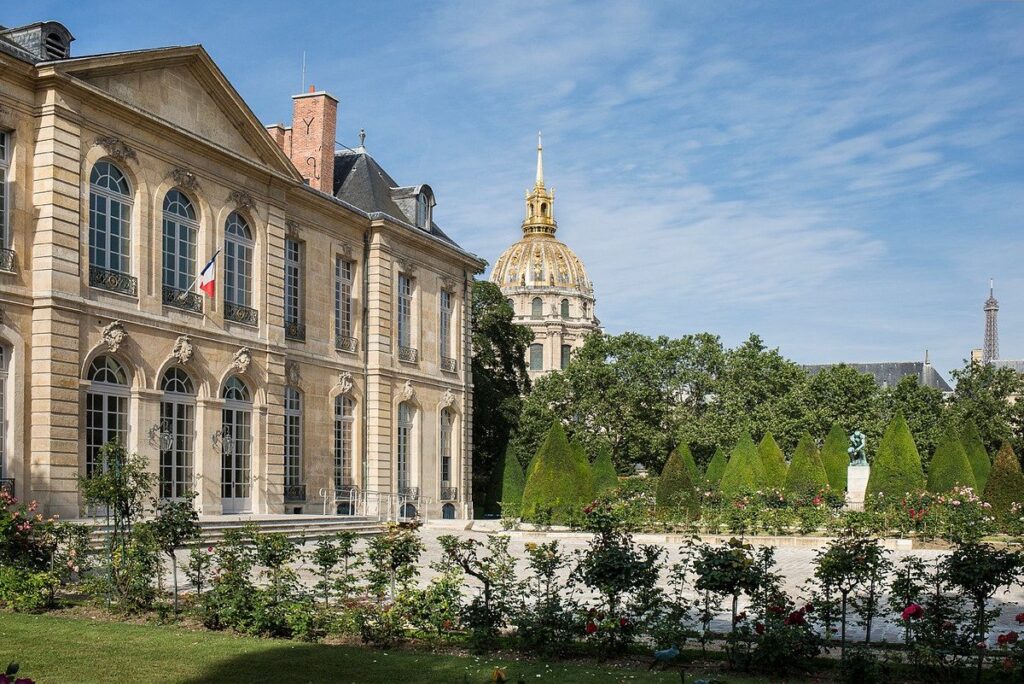
Even if you’re not an art lover, visiting the Musée Rodin is worthwhile to lose yourself in its romantic gardens and inspiring surroundings.
Sculptor, painter, sketcher, engraver, and collector Auguste Rodin donated his entire collection to the French state in 1908, on the condition that his former workshop and showroom—the beautiful 1730 Hôtel Biron—be dedicated to displaying his works. This mansion was where he lived and worked while in Paris. Rodin’s art is showcased both inside the mansion and throughout its rose-filled garden, one of central Paris’s most peaceful retreats.
Highlights
The rose garden is a serene spot to contemplate Rodin’s famous sculpture The Thinker. Other key works include The Gates of Hell, featuring 180 figures illustrating scenes from Dante’s Inferno; Rodin’s marble monument to love, The Kiss; and the world’s largest collection of pieces by his protégé and muse, Camille Claudel.
On the 1st floor, room 12 displays paintings by Van Gogh and Monet once owned by Rodin. The ground-floor room ‘Rodin at the Hôtel Biron’ houses an eclectic mix of sculptures and curiosities Rodin collected and arranged in his working space in 1908.
Tickets, Tips, and Accessibility
A combined ticket for the Musée Rodin and Musée d’Orsay costs €21 and is valid for one visit to each museum within three months. Audioguides are available for €6. End your visit with a relaxed drink at the museum’s garden café, open until 5 pm. For those interested only in the outdoor sculptures, a cheaper garden-only ticket is available. Pre-purchasing tickets online helps you skip queues.
The museum is free for all visitors on the first Sunday of the month, from October to March.
The exhibition spaces, garden, café, and auditorium are wheelchair accessible, with ramps and free wheelchairs available. Blind and visually impaired visitors can receive gloves and a list of works suitable for tactile exploration, and guide dogs are welcome. Induction loops assist visitors with hearing difficulties.
Nearby
Musée d’Orsay and Hôtel des Invalides are both about a 15-minute walk away. Nearby boulangeries like Besnier offer fresh baked goods. For traditional French dining, book a table at Paris’s oldest restaurant, À la Petite Chaise, or for a livelier atmosphere, try Chez L’Ami Jean.
Getting There
Metro Varenne (line 13) is right next door, or take line 8 or 13 to Invalides, a 10-minute walk away. The RER C train stops at Invalides, followed by a 10-minute walk south.

Filled with fountains, ponds, and sculptures, the formal 28-hectare Tuileries Garden begins just west of the Jardin du Carrousel. It was laid out in its current form in 1664 by André Le Nôtre, the renowned architect behind the gardens at Versailles. The Tuileries quickly became the most fashionable place in Paris to stroll in one’s finest attire. Today, it forms part of the Banks of the Seine UNESCO World Heritage site and remains one of Paris’s best-loved parks.
The 16th-century Palais des Tuileries, once home to Napoleon and other rulers, stood at the garden’s western end until 1871, when it was destroyed during the Paris Commune. Only two buildings survive today, both now museums.
Historic Axis and Museums
The axe historique (historic axis) extends westward from the Tuileries’ east–west axis along the Avenue des Champs-Élysées, reaching the Arc de Triomphe and continuing to the Grande Arche in the La Défense business district.
At the garden’s far western end are two notable museums: the Musée de l’Orangerie and the Jeu de Paume.
The Musée de l’Orangerie, housed in a 19th-century building originally designed to shelter the garden’s orange trees in winter, is a highlight. Its two oval rooms on the top floor showcase eight of Monet’s monumental Water Lilies paintings, bathed in natural light.
Downstairs features the private collection of art dealer Paul Guillaume (1891–1934), including masterpieces by Cézanne, Matisse, Picasso, Renoir, Modigliani, Soutine, and Utrillo. The museum is popular, so arriving early is advised. A combined ticket with the Musée d’Orsay costs €18. English tours (€6) take place daily at 2:15 pm.
Nearby, the Jeu de Paume, once the palace’s royal tennis court, hosts innovative photography exhibitions in a light, airy space.
Opening Hours and Other Practicalities
Entry to the gardens is free. Opening hours vary by season:
June–August: 7 am to 11 pm
April, May, September: 7 am to 9 pm
October–March: 7:30 am to 7:30 pm
From June through August, the summer funfair Fête des Tuileries livens up the gardens with over 60 attractions, including bumper cars and a hall of mirrors.
The Tuileries Garden is a favorite jogging spot for those staying on the Right Bank but can get crowded during the day—early morning visits are best for a peaceful experience.
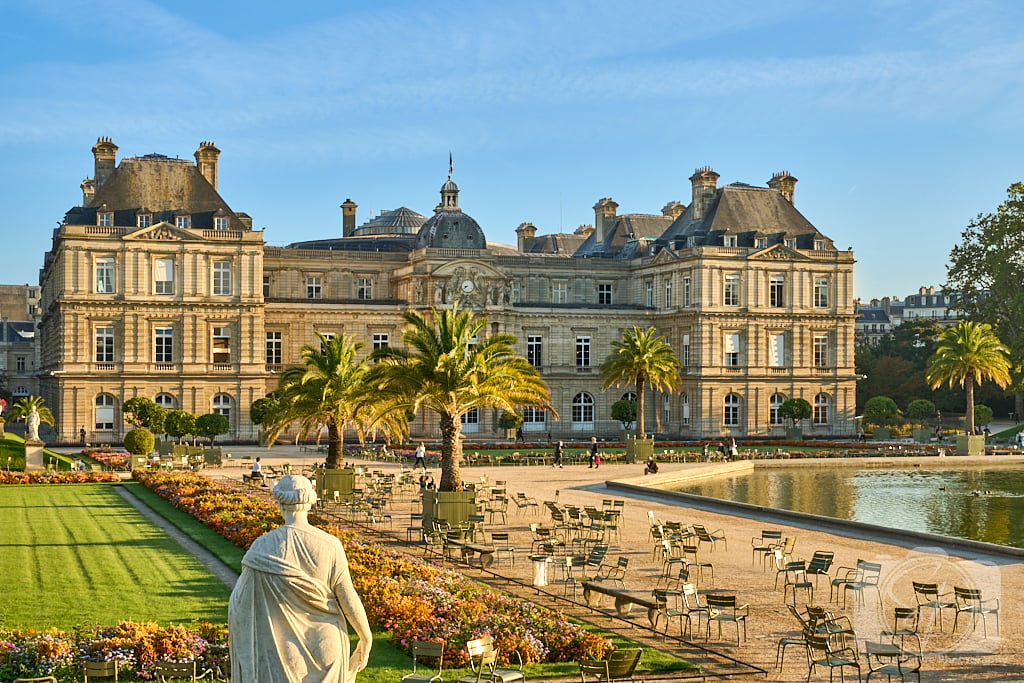
Luxembourg Gardens
This famous inner-city oasis of formal terraces, chestnut groves, and lush lawns holds a special place in Parisians’ hearts.
Why You Should Go
Napoléon dedicated the 23 hectares of beautifully laid-out Luxembourg Gardens to the children of Paris. Many locals remember spending childhood afternoons steering wooden sailboats on the octagonal Grand Bassin pond, watching puppet shows at the Théâtre du Luxembourg, or enjoying the merry-go-round and pony rides. These beloved activities remain today alongside modern playgrounds and sports facilities.
The gardens’ southern orchards grow dozens of apple varieties, while bees have produced honey in the nearby Rucher du Luxembourg since the 19th century. The two-day Fête du Miel (Honey Festival) is held here each late September. Behind the Musée du Luxembourg, the palace’s orangery shelters lemon and orange trees, palms, pomegranate, and oleanders during colder months.
History
The gardens provide a scenic backdrop to the Palais du Luxembourg, built in the 1620s for Marie de Médici, widow of Henri IV, who longed for her childhood home, the Pitti Palace in Florence. Since 1958, the palace has housed the Sénat, the French Upper House of Parliament, occasionally open for guided tours. Nearby is the Italianate Fontaine des Médicis, an ornate fish pond built in 1630.
Close by is the Hôtel du Petit Luxembourg, a modest 16th-century residence where Marie de Médici lived while the palace was constructed. Since 1825, it has been the home of the president of the Senate.
Opening Hours and Practical Information
If you plan to picnic, note that the manicured lawns are off-limits except for a small area on the southern edge. Instead, take a cue from Parisians and grab one of the iconic green metal chairs designed in 1923, then find your favorite spot in the park.
Entry to the gardens is free, though there is a fee to enter the Musée du Luxembourg, which hosts prestigious temporary art exhibitions.
Opening hours vary by season; check posted times at the garden entrances before your visit.
WhatsApp us